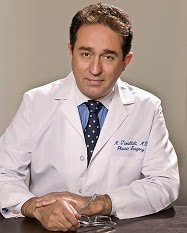Almost on a daily basis I ask myself the relationship between beauty and what I, as a plastic surgeon performing cosmetic operations, do. I ask myself did I achieve a beautiful result; did I make the patient look “younger”, “more rested”, more beautiful? The more years I am in practice, the more I understand this relationship between our perceptions of beauty and what I do surgically or by other interventions to enhance that idea.
The surprising conclusion I have reached is summed up in one word; Normal.
The best results that I can possibly achieve are where the patient looks normal! That is to say that my patient has no physical characteristics that stand out to such an extent that allow you, the observer, to identify, classify or remark on. In essence, and contrary to commonly held modern beliefs about our uniqueness and individuality, when it comes to our looks we all just want to be normal; with unimpeachable physical characteristics.
As humans we have a tendency to identify each other by physical characteristics. The most obvious and nefarious has been skin color along with its well known historical and social sequelae. But even after color we keep on separating and identifying each other by the size and shape of our nose, breasts, body, ears, hair, eyes, and so on. How many times has someone tried to identify another as “ the normal height and weight white girl with normal breasts and normal eyes, ears and nose, and with no scars.” A much more common identifier is” the short, fat, black man with big breasts and a hooked nose with floppy ears, droopy eyelids, and a scar on his face”. (Guess what? Almost all these characteristics can be improved by plastic surgery! )
In a reverse anthropomorphism, we identify other humans by the physical characteristics that set them apart from the rest of the herd. “Ugliness” can hence be defined as physical characteristics and deformities that fall outside of the perceived social norm for that group, in that particular time period, and by which an individual can be identified as being other. But does the inverse definition apply to our concept of beauty?
That is physical characteristics that are at the middle of the norm of the group for a particular period? Surely we do not mean that the most “plain Jane” is the most beautiful? The girl or boy that we cannot describe in any way? Well, try it- think of a beautiful woman of our times; try to describe her. It is difficult. Yet we all have a very similar concept of what makes a human “beautiful”, hard wired into our brains, even if we cannot put it into words. That concept may change somewhat over time with new fashions and styles, but the basis is the same across races and history. Physical beauty ends up meaning that we find a certain harmony in the characteristics we are looking at, be they a whole body, a face, a hand, or even a nose.
The Golden mean or ratio ( 1:1.618) is a mathematical ratio found throughout nature that relates differing parts of natural objects to one another. This is one ratio that we find beautiful; this is one of those harmonies we seek. For example the length of the eyelid (1) to the length of the mouth (1.618) is though by most to be beautiful. Likewise, the width of the front incisor tooth (1.618) to the tooth directly next to it(1). The list goes on ad infinitum.
Apart from these “hard wired” perceptions of beauty, there are other “ hard wired” criteria by which we also judge each other’s appearance.
For example, we are pre-programmed to look for and notice objects that are dark and round. They attract our attention much more than, say, a dark line. This ability rests on a species recognition trait that allows us to recognize each other as being from a similar life form as opposed to a lizard. Our pupils, out nipples, belly buttons, are all round and dark for that reason. In fact, during the 18th century both men and women of means and fashion used this innate ability of our brains to attract attention to themselves by the use of applied beauty marks, mimicking skin moles.
The quality of the skin is also one such criterion. Even if one’s bone structure and relations of nose to mouth are not in the golden mean proportion, should we have a clear complexion with smooth skin, we are thought of as being more attractive. The answer to this is that we are programmed to beware of outward (skin and body) signs of disease in those around us. It’s a warning mechanism with its basis as the suitability of the individual as a sexual partner. For example, if your neighbor has pimples and pustules, skin discoloration, unevenness of the texture, or peeling skin, you are apt to keep your distance and avoid contact lest you catch their illness. God forbid that they have wrinkles, moles, or other growths on the skin that are giveaways for being older (and less attractive for procreation)- Just close your eyes and imagine a witch. Do you see her warty growths on her nose and chin?
The converse, clear skin that is smooth and free of blemishes, alludes to a healthy young person who is sexually more attractive.
A multi-billion dollar cosmetic industry exists worldwide to counter our innate ability to discern. Cosmetic surgery is also part of this collusion against our primitive instincts of judging each other by our physical characteristics. It makes the playing field more even and allows our intellect the opportunity to shine through our body coverings. Plastic surgery procedures allow the unsightly conversation pieces that our bodies may provide, to be transformed and disappear. It’s that change that we see in ourselves when looking in a mirror, and that others see when looking at us, that changes attitudes from within and from the outside.
Beauty is truly in the eye of the beholder, but it seems we are all looking through the same lens at different periods of history. Also, we all know that the eye can be tricked by the sleight of hand (with a scalpel).
About Dr. Tavallali
- Dr. Tavallali
- Annandale, Virginia, United States
- Dr. Tavallali is one of the area's most experienced surgeons specializing in cosmetic plastic surgery. He completed his undergraduate work at Georgetown University, after which he obtained a Masters Degree in Physiology and Biophysics before entering the Medical School. He graduated with Honors from Georgetown University School of Medicine and trained as a General Surgeon at Lenox Hill Hospital in New York City. He completed his Plastic and Reconstructive Surgery at Baylor College of Medicine at the Texas Medical Center in Houston. You can visit Dr. Tavallali's website, by going to www.Tavmd.com.
Monday, November 10, 2008
Beauty and Plastic surgery
Posted by
Dr. Tavallali
0
comments
Labels:
artefill,
beauty,
cosmetic surgery,
golden mean,
nature,
plastic surgery,
proportion


Subscribe to:
Posts (Atom)

